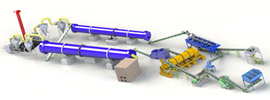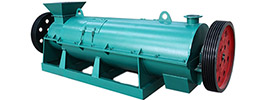Guide to Correct Blending Ratios for Blended Fertilizers: From Principles to Practical Implementation
I. Core Principles of Blending Ratios
- Principle of Nutrient Balance
- Determine the ratio of nitrogen (N), phosphorus (P), potassium (K), and micronutrients based on crop demand patterns (e.g., vegetables require more nitrogen in early stages and more phosphorus/potassium in later stages) and soil test results.
- Example: For corn grown in potassium-deficient soil, set an N-P-K ratio of 2:1:2.
- Principle of Physical Property Optimization
- Ensure compatibility of raw material particle sizes and moisture content to maintain good air permeability and water retention after mixing. For instance, sawdust enhances aeration, while peat moss improves water retention.
- Principle of Biological Activity Preservation
- Avoid raw materials containing heavy metals or substances that inhibit microbial activity to ensure effective microbial function in the soil.
- Principle of Cost-Effectiveness
- Prioritize locally available, low-cost materials (e.g., soybean meal for nitrogen, bone meal for phosphorus, wood ash for potassium) to reduce production costs.
II. Blending Methods and Steps
- Soil Testing and Goal Setting
- Conduct professional soil tests to identify nutrient deficiencies and determine required supplementation ratios. For example, if soil phosphorus levels are low, increase the phosphorus ratio.
- Material Selection and Calculation
- Material Selection: Choose raw materials based on target nutrients (e.g., urea for high nitrogen, diammonium phosphate for phosphorus/potassium).
- Calculation Formula:
- Suppose you need to prepare 100 kilograms of blended fertilizer with a nutrient content of 22-10-12 (22% N, 10% P, 12% K) using urea (46% N), diammonium phosphate (18% N, 46% P₂O₅), and potassium sulfate (50% K₂O):
- Potassium Sulfate: 12% ÷ 50% × 100 kg = 24 kg
- Diammonium Phosphate (for phosphorus): 10% ÷ 42% (P content in diammonium phosphate) × 100 kg ≈ 23.8 kg
- Urea (remaining nitrogen): (22% - 3.6% N from diammonium phosphate) ÷ 46% ≈ 40 kg
- Filler (e.g., bentonite for texture adjustment): 100 kg - (24 + 23.8 + 40) kg = 12.2 kg.
- Mixing and Quality Check
- Use a horizontal mixer for uniform blending (at least 10 minutes of mechanical mixing or 5 manual overturns).
- Verify nutrient content, pH, and microbial activity through lab tests to ensure compliance with targets.
III. Practical Blending Formulas
- General-Purpose Formulas
- 15-15-15 Formula: 10 kg urea + 16.5 kg diammonium phosphate (equivalent to commercial 15-15-15 compound fertilizer).
- 18-18-18 Formula: 12 kg urea + 19.5 kg diammonium phosphate + 18 kg potassium sulfate (suitable for fruit trees during flowering/fruiting).
- 20-20-20 Formula: 2.25 kg urea + 2.25 kg monoammonium phosphate + 0.75 kg potassium sulfate (ideal for short-cycle leafy vegetables).
- Specialized Formulas for Cash Crops
- Wheat: 15-15-15 formula to promote tillering and stem strength.
- Fruit Trees: 18-18-18 formula to enhance fruit set and quality.
- Leafy Greens: 20-20-20 formula for rapid nutrient uptake and shortened growth cycles.
IV. Critical Precautions
- Material Quality Control
- Avoid damp, caked, or heavy-metal-contaminated fertilizers to prevent soil pollution.
- Mixing Uniformity
- Ensure thorough blending to avoid nutrient segregation (mechanical mixing ≥10 minutes; manual mixing ≥5 turns).
- Storage Conditions
- Store in dry, ventilated areas away from direct sunlight to prevent nutrient degradation.
- Application Timing
- Apply during cool periods (early morning/late afternoon) to minimize nutrient volatilization.
- Dynamic Adjustments
- Modify ratios and application rates based on crop growth stages and weather fluctuations (e.g., post-rain fertilization).
By adhering to these guidelines, farmers can reduce costs by 20–30% while increasing yields by 8–15%. Custom blending is particularly cost-effective for large-scale operations (≥30 acres) and ensures precise nutrient delivery tailored to soil and crop demands.
 Send us a Email
Send us a Email Wulong Industrial Cluster
Wulong Industrial Cluster Have any question?
Have any question?



















